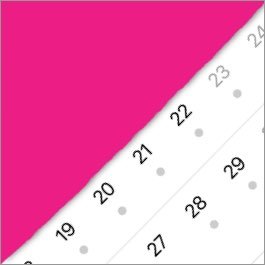Grade 8 Technical Focus: Learning the Hi Hat Pattern
By Tom Warner
Now here’s a song that beautifully reflects the concept of complex time sounding like common time. Drummer Vinnie Colaiuta really did a great job on ‘Seven Days’ by Sting; it’s flowing, it has feel, and it’s tight and consistent with a fluid vibe. Everything you would expect from the wizard of odd. I played the 1993 version for my degree recital, and learned a few nifty tricks to picking up the complexities in this song.
Learning the Hi Hat Pattern
First up, the accentation on the hi hats. It’s not as tough as it seems; if you fit the accent pattern into 4/4 it actually makes lots more sense.
It is essentially just this, played over a bar of 5/4. This is a polymetre, where two rhythmic counts overlap. They play what’s called a mnemonic melody, which makes it much easier to identify what the polymetre plays, but more on that later. Your Moeller technique will come in handy learning this pattern - playing a triplet Moeller feel in a triple stroke rhythm. If you’re not familiar with or comfortable with your Moeller technique yet, here's a handy link.
Once you’ve learned how to keep this pattern flowing, we need to apply it to 5/4. However, note that I’ve given you an exercise that plays semiquavers. The pattern in the song doesn’t play this, so an accent pattern over the quavers in the song isn’t going to match up rhythmically the same way. The movement in the semiquavers is what you’ve learned so far. So, here is the pattern as a quaver ostinato:
You’ll notice it overlaps two bars, so what exactly makes it a polymetre? Here lies the genius of this song. Count the number of accents. You’ve just counted 5. So the accent pattern plays 5 over 5, so how does that work? How does 5 not play over one bar of 5? It’s because the accent pattern plays over a 5/2 feel, half time to the actual count. 5/2 equates to 10/4, which is 2 bars of the original 5/4, so it takes 2 bars to complete. Now that you know the counting, you need to learn the phrasing. You essentially play an accent every 4 hi hats, which is where the 4/4 feel comes into it. The reall challenge is keeping the consistency up, as the song is pretty fast, so use a 4 stroke Moeller pattern (that’s one down stroke and three upstrokes) and you’ll ace it in no time. Once you’ve got your right hand moving automatically, add your kicks and snares and you’ve nailed this beat.
Now for a little bit on polymetres. Adam Neely (check him out on Youtube) explains polymetres very well. If you’re serious about making music your career watch his videos, there’s some very insightful stuff. He’s a legitimate source; he has two degrees in Jazz composition and spends his time learning and creating online educational source material, and has won various awards for his ability.
So, polymetres. A mnemonic melody is something you can say over a rhythm or melody to remember the pattern. In this case, it combines two things into one. For example, a 3 over 2 polymetre would play a single pattern in 3/4, or the mnemonic could say 'nice cuppa tea':
The skill lies in being able to count each part separately - counting the 3, then counting the 2. There’s an equation to working out polymetric patterns (Adam Neely goes into great detail about this in this video (skip to 2.26).
X Rows (Let's go 5)
Y Numbers (Let's go 6)
Circle every X number (but we'll colour code them instead).
For the sake of learning this, I’ll make the rules, then you can make them! Your right hand is going to play beat 1 of every count (you’ll be counting to 6, this is your pulse, so one is the start of every bar of 6. Your left hand will play every green beat within that pulse. Once you’ve learned this pattern, try flipping your hands, then do it on your feet, then line them up, then play the opposite roles (so right hand/left foot plays 6, and left hand/right foot plays 5). You’ll develop a lot of coordination this way, and you’ll find you get a serious brain boost from playing them, as well as lots of new ideas in your improvisation.
About the author
Tom Warner is a drum tutor based in Sheffield, UK. He is in the process of completing a Masters Degree in Creative Practice revolving around Physiotherapy and Neurotherapy with drumming at the heart, and has the intention of starting a PhD by 2021 to further his studies in drumming as a clinical therapy. He has worked as a leading drum teacher at mgrmusic.com since 2014, teaching hundreds of students during this time.













